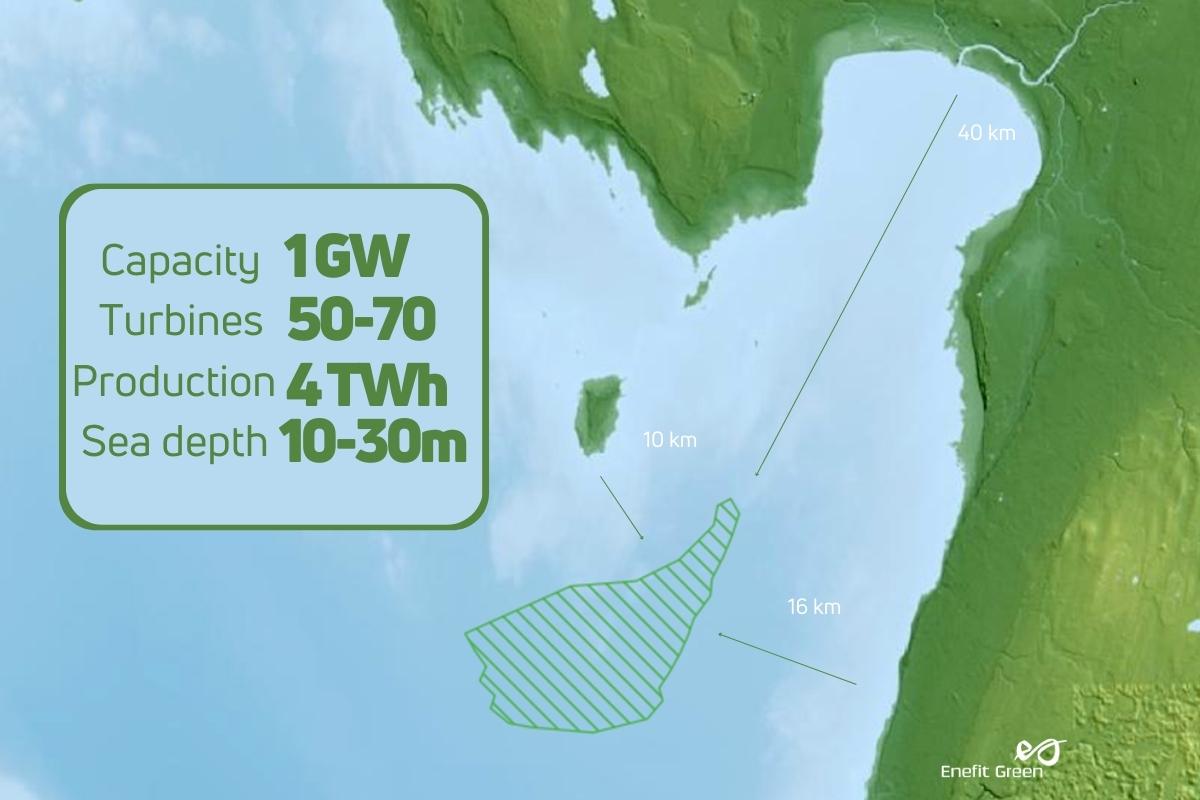Pursuant to § 56 (12) of the Environmental Impact Assessment and Environmental
Management System, the wording of the Environmental Impact Assessment and
Environmental Management System Act in force for the time of submitting the application
for
a construction permit (27.02.2010) applies to the Environmental Impact Assessment of the
Gulf of Riga wind farm. At the same time, the purpose of preparing an Environmental Impact
Assessment is to reduce the administrative burden, ie so that the results of the Environmental
Impact Assessment can be used as a basis for issuing both construction permits and further
permits needed for the construction of the wind farm (water permit and construction permit)
and for avoiding duplicating Environmental Impact Assessment in the future. Therefore, the
Environmental Impact Assessment report is prepared using the best possible knowledge and
current law in force, but the procedures follow the wording of the Environmental Impact
Assessment and Environmental Management System Act in force at the time of submitting the
construction permit application and the decision to accept the construction permit procedure.
In current Environmental Impact Assessment (EIA) process, the decision maker (competent
authority) is the
The Consumer Protection
and
Technical Regulatory Authority, the EIA is
performed by Skepast&Puhkim
OÜ
and the developer is
Eesti
Energia
AS.
The basis for initiating the EIA is paragraph 6(1) p.5 of the Environmental Impact Assessment
and Environmental Management System Act, according to which the construction of a wind
power plant in a water body is an activity with a significant environmental impact.
The purpose of the Environmental Impact Assessment is to provide the licensor with
information on the significant environmental impacts of the proposed activity and its
real
alternative options and to select the most appropriate solution for the proposed activity to
prevent or reduce adverse effects on the environment and promote sustainable development.
This means that when preparing an Environmental Impact Assessment program, significant
impacts are selected out from the various environmental impacts related to the project or those
impacts whose significance cannot be identified in the initial assessment. They will be subject
to a in-depth assessment within the framework of the Environmental Impact Assessment
report. Insignificant impacts are excluded from the in-depth assessment.
The content of the EIA program is determined by paragraph 13 of the Environmental Impact
Assessment and Environmental Management System Act:
1) the purpose and exact location of the proposed activity;
2) a brief description of the proposed activity and reasonable alternatives therefor;
3) a description of the environment likely to be affected;
4) the relationship of the proposed activity with the strategic planning documents;
5) information on the content of environmental impact assessment of the proposed activity
and reasonable alternatives therefor, including information on the potential sources of
impact, the size of the impact area and the affected environmental elements of the
proposed activity and reasonable alternatives therefor;
6) a description of the methods of assessment used upon environmental impact
assessment, including information on the researches required for the environmental
impact assessment;
7) a schedule of environmental impact assessment of the proposed activity and
reasonable alternatives therefor and the schedule for the publication of the results of
the assessment;
8) information on the developer and the name of the expert or the composition of the
expert group, indicating and justifying which areas and what impact each person in the
group will assess;
9) a list of the authorities concerned, together with the reasons for their involvement;
10) a copy of the application for an activity permit.
The content of the EIA is determined by paragraph 20 of the Environmental Impact
Assessment and Environmental Management System Act and Regulation No. 34 of the
Minister of the Environment in force since 01.09.2017 “Specified requirements for the content
of environmental impact assessment reports”.

